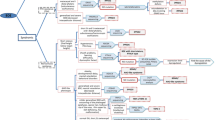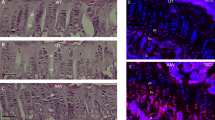Abstract
Acrodysostosis is an uncommon skeletal dysplasia associated with nasal hypoplasia, midface deficiency, severe brachydactyly, and varying degrees of hearing loss and mental retardation. Previous publications have suggested that it may be difficult to distinguish acrodystostosis from pseudohypoparathyroidism on clinical grounds, but acrodysostosis does appear to have distinct clinical and radiologic findings. Spinal stenosis is an underappreciated risk in acrodysostosis, despite the reported loss of normal caudal widening of the lumbar interpediculate distance on AP spine radiographs in the original report of this disorder by Robinow et al., with confirmation of these radiographic findings by Butler et al. We report two sporadic cases of acrodysostosis, one of which required decompressive laminectomy for symptomatic spinal stenosis, and review 11 cases of acrodysostosis from 9 families that were submitted to the International Skeletal Dysplasia Registry. The objective of this report is to determine the frequency and severity of spinal stenosis in patients with acrodysostosis and to summarize the clinical and radiographic findings of acrodysostosis in an effort to distinguish acrodysostosis clearly from pseudohypoparathyroidism. The pattern of brachydactyly differs between these two conditions, and varying degrees of spinal stenosis are characteristic of acrodysostosis. Both our index patients with acrodysostosis had normal bioactivity of the alpha subunit of the Gs protein, therefore indicating that acrodysostosis has a different pathogenesis from pseudohypoparathyroidism. Furthermore, single-strand confirmational polymorphism (SSCP) analysis failed to demonstrate any confirmational alterations in the coding exons of the Gs alpha gene. These radiographic and laboratory findings substantiate that acrodysostosis is clinically different from pseudohypoparathyroidism and that it is necessary to follow patients with acrodysostosis for signs of spinal stenosis.
Similar content being viewed by others
Author information
Authors and Affiliations
Additional information
Received: 7 June 2000 Accepted: 3 August 2000
Rights and permissions
About this article
Cite this article
Graham Jr., J., Krakow, D., Tolo, V. et al. Radiographic findings and Gs-alpha bioactivity studies and mutation screening in acrodysostosis indicate a different etiology from pseudohypoparathyroidism. Pediatric Radiology 31, 2–9 (2001). https://doi.org/10.1007/s002470000355
Issue Date:
DOI: https://doi.org/10.1007/s002470000355




